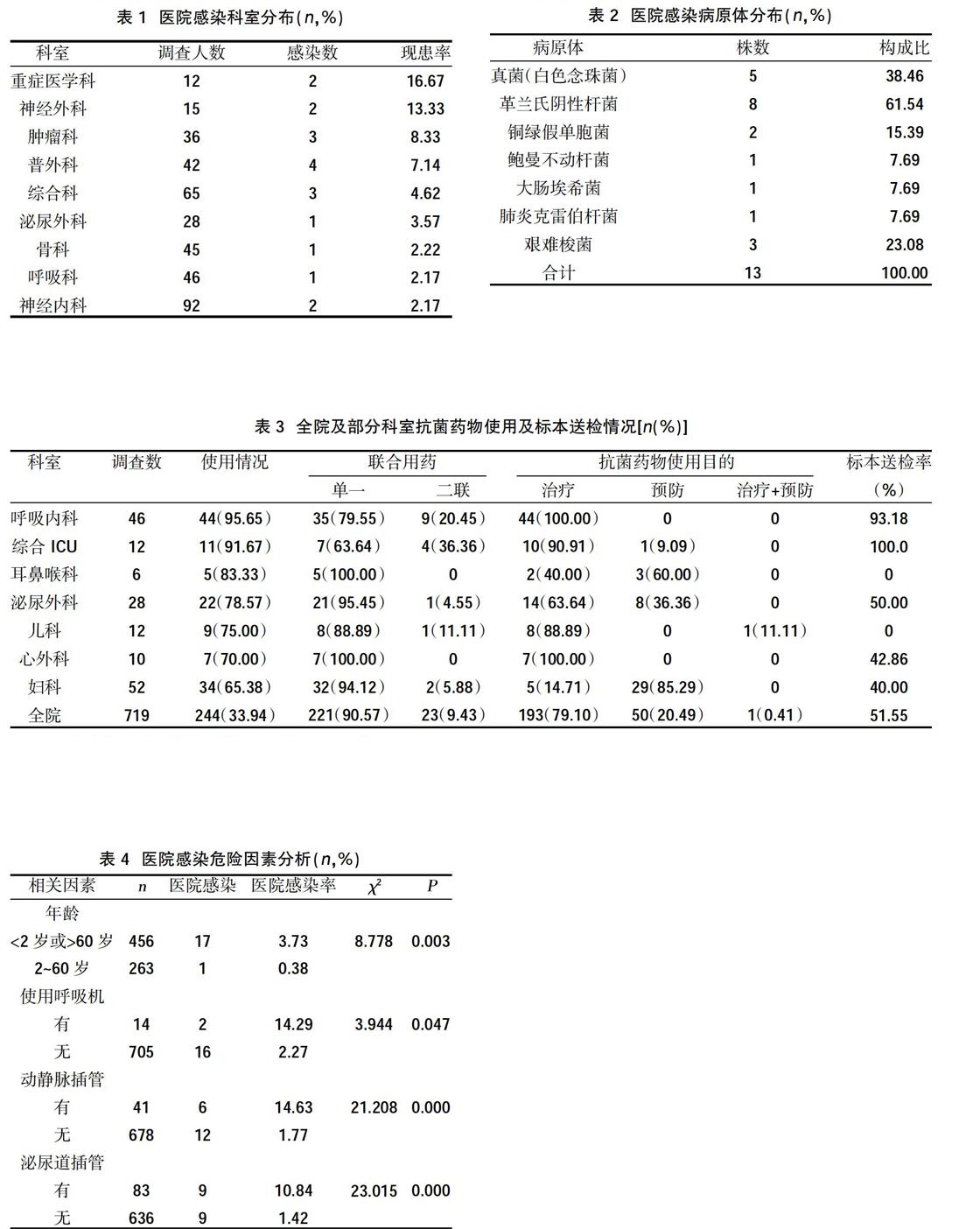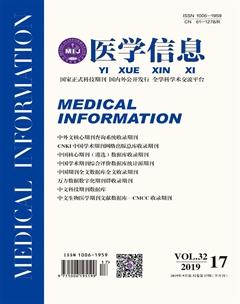某综合医院住院患者医院感染现患率调查
张楠 白昊坤 赵怀

摘要:目的 了解醫院感染现状,分析相关危险因素,为医院感染的预防提供依据。方法 采用病历调查和床旁调查相结合的方法,调查2018年5月24日0∶00~24∶00某院所有住院患者的医院感染现状,描述医院感染分布情况,病原菌检出情况以及抗生素使用情况,并进行医院感染患者的危险因素分析。结果 某院住院患者719例,实查率100.00%,医院感染现患率为2.50%,其中重症医学科(ICU)、神经外科现患率较高,分别为16.67%、13.33%,主要为下呼吸道感染,占55.56%。检出病原体13株,G-菌最高(61.54%),其次为真菌(38.46%)。全院抗菌药物使用率为33.94%,治疗用药占79.10%;单一用药占90.57%,用药标本送检率为51.55%。年龄(<2岁或>60岁)、使用呼吸机、使用泌尿道插管、动静脉插管,差异均有统计学意义(P<0.05),是医院感染的危险因素。结论 年龄(<2岁或>60岁)、使用呼吸机、动静脉插管、泌尿道插管是医院感染的危险因素,应重点加强对长期住院患者的管理,加强导管相关感染的防控工作,加强重点环节、危险因素的监管防控力度,确保导管相关感染集束式防控措施的落实,医务人员加强手卫生、合理使用抗菌药物、严格无菌操作技术规程。
关键词:医院感染;现患率;危险因素;病原菌
Abstract:Objective Understand the status of nosocomial infections, analyze relevant risk factors, and provide evidence for prevention of nosocomial infections. Methods The medical records and bedside survey were combined to investigate the status of nosocomial infection in hospitals from 0:00 to 24:00 in 24 May 2018, describing the distribution of nosocomial infections, pathogen detection rate and antibiotic use. And conduct risk factor analysis of patients with nosocomial infections. Results There were 719 inpatients in a hospital, the actual investigation rate was 100.00%, and the prevalence rate of nosocomial infection was 2.50%. Among them, the prevalence rate of severe medicine (ICU) and neurosurgery was 16.67% and 13.33%, respectively, mainly for lower respiratory tract infection. , accounting for 55.56%. 13 strains of pathogens were detected, the highest G- bacteria (61.54%), followed by fungi (38.46%). The use rate of antibacterial drugs in the hospital was 33.94%, and the therapeutic drugs accounted for 79.10%; the single drugs accounted for 90.57%, and the drug samples were 51.55%. Age (<2 years old or >60 years old), use of ventilator, use of urinary catheterization, arteriovenous intubation, the difference was statistically significant (P<0.05), is a risk factor for nosocomial infection. Conclusion Age (<2 years old or >60 years old), use of ventilator, arteriovenous intubation, and urinary catheterization are risk factors for nosocomial infection. It is important to strengthen the management of long-term hospitalized patients and strengthen the prevention and control of catheter-related infections. Strengthen the supervision and prevention of key links and risk factors, ensure the implementation of cluster-related infection prevention and control measures, and strengthen the hand hygiene, rational use of antibacterial drugs, and strict aseptic operation technical regulations.

